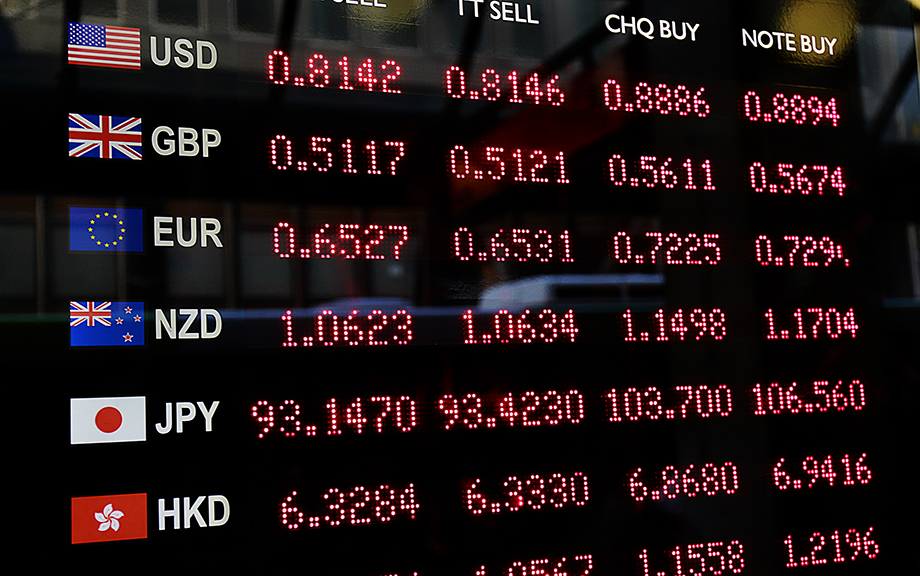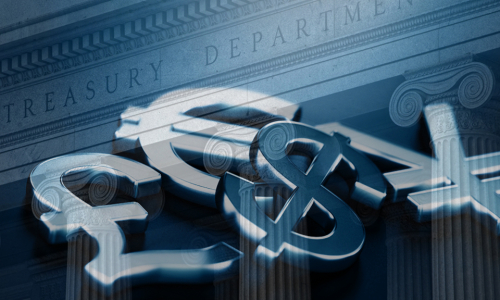Do Exchange Rates Fully Reflect Currency Pressures?

Currency values are important both for the real economy and the financial sector. When faced with currency market pressures, some central banks and finance ministries turn to foreign exchange intervention (FXI) in an effort to reduce realized currency depreciation, thus diminishing its economic and financial consequences. This post provides insights into how effective these interventions might be in limiting currency depreciation.
What Is the Outlook for China’s External Surplus?

The sharp slowdown in China’s property sector has reignited debate over the country’s future role as a net provider of savings to the global economy. The debate revolves around whether a sustained decline in property investment will spur a long-term increase in China’s current account surplus, given the country’s high savings rate. However, China’s rapidly aging population presents opposing forces that complicate this story. The shift of a large share of its population from working life to retirement will reduce savings supply even as a shrinking labor force will reduce investment demand. In this post, we focus on the demographic part of the story and find that this force will exert considerable downward pressure on China’s current account surplus in coming years.
When Will U.S. Exports Take Off?

The economic recovery from the COVID-19 pandemic has been uneven across countries and sectors. While U.S. imports have rebounded to surpass their level before the collapse in 2020, U.S. exports remain far below their pre-pandemic level. This asymmetry in part reflects the different sectoral compositions of imports and exports. U.S. imports are driven by goods trade, while exports rely more heavily on services trade. A key component of services exports is foreign travel to the United States, which has dried up due to the suspension of nonessential travel imposed in March 2020. However, U.S. exports may now be at a turning point given the reopening of U.S. borders to all vaccinated travelers on November 8. We analyze the trajectory of U.S. services and how the lifting of the travel ban might contribute to the rebound of U.S. services exports.
COVID‑19 Has Temporarily Supercharged China’s Export Machine
Treasury Market Liquidity during the COVID‑19 Crisis

A key objective of recent Federal Reserve policy actions is to address the deterioration in financial market functioning. The U.S. Treasury securities market, in particular, has been the subject of Fed and market participants’ concerns, and the venue for some of the Fed’s initiatives. In this post, we evaluate a basic metric of market functioning for Treasury securities—market liquidity—through the first month of the Fed’s extraordinary actions. Our particular focus is on how liquidity in March 2020 compares to that observed over the past fifteen years, a period that includes the 2007-09 financial crisis.
Fight the Pandemic, Save the Economy: Lessons from the 1918 Flu

The COVID-19 outbreak has sparked urgent questions about the impact of pandemics, and the associated countermeasures, on the real economy. Policymakers are in uncharted territory, with little guidance on what the expected economic fallout will be and how the crisis should be managed. In this blog post, we use insights from a recent research paper to discuss two sets of questions. First, what are the real economic effects of a pandemic—and are these effects temporary or persistent? Second, how does the local public health response affect the economic severity of the pandemic? In particular, do non-pharmaceutical interventions (NPIs) such as social distancing have economic costs, or do policies that slow the spread of the pandemic also reduce its economic severity?
Does a Data Quirk Inflate China’s Travel Services Deficit?
Is the United States Relying on Foreign Investors to Fund Its Larger Budget Deficit?

The federal tax cut and the increase in federal spending at the beginning of 2018 substantially increased the government deficit, requiring a jump in the amount of new Treasury securities offerings on financial markets to fund the gap. One question is whether the government will have to rely on foreign investors to buy these securities. Data for the first half of 2018 are now available and, so far, the country has not had to increase the pace of borrowing from abroad. The current account balance, which measures how much the United States borrows from the rest of the world, has been essentially unchanged. Instead, the tax cut has boosted business saving, allowing the United States to finance the higher federal government deficit without increasing the amount borrowed from foreign investors.
Good News, Leverage, and Sudden Stops

One of the major debates in open economy macroeconomics is the extent to which capital inflows are beneficial for growth. In principle, these flows allow countries to increase their consumption and investment spending beyond their income by enabling them to tap into foreign saving. Periods of such borrowing, however, are associated with large trade deficits, external debt accumulation, and, in some cases, overheating when these economies operate beyond their potential output level for an extended period of time. The relevant question in this context is whether the rate at which a country is taking on external debt has useful predictive information about financial crises.
The Turnaround in Private and Public Financial Outflows from China
China lends to the rest of the world because it saves much more than it needs to fund its high level of physical investment spending.
















 RSS Feed
RSS Feed Follow Liberty Street Economics
Follow Liberty Street Economics